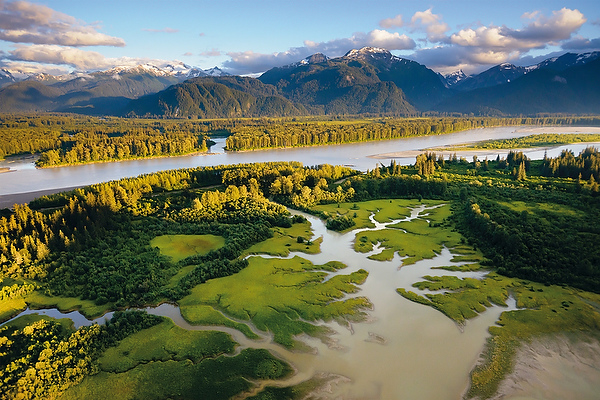And other thoughts at the meeting of John Rex and Pete Seeger.
I grew up along the Hudson River. Near me it is a mile wide, a thoroughfare, an obstacle, and a facet of daily life. I have been surrounded by the rhetoric of the river: learning history, geography, biology by it. It is a grand wonder – one which is also called the World’s Largest Superfund Site. (Any Pete Seeger fans? Clearwater Festival? Here’s where it all came from.)
I also grew up near a smaller river, a tributary which was bridged by the driveway to the horse farm where I spent so much of my time, and so much of my time talking about the river. The Ramapo River was an obstacle too—a state watershed protection plan made it very difficult for the farm managers to get any desired infrastructure project off the ground. I grew up learning, and often explaining, the effects of upstream actions on downstream waters. The Ramapo and its headwater streams benefit from the protection of well-maintained buffers. Though downstate New York doesn’t see forestry operations anything akin to those of BC, these protections are on the order of protection Dr. Rex selected as the minimum prescription for small streams around Prince George. In New York, however, the incentive is clear, as the results are in everyone’s backyard.
What I didn’t know from my experience were the reasons these buffers were so necessary—most folks talk of erosion, but little else, and certainly not the relationship between shade, water temperature, large wood supply, and channel morphology. “We all live in a watershed” is a state-wide initiative, but it speaks less to these downstream benefits than it ought to.
Dr. Rex is a capable lecturer (microphone and laser pointer capabilities notwithstanding) and a pleasure to listen to. He is among those who can truly communicate a subject of passion to those not normally therein engaged. His style of presentation is approachable: using a good amount of industry terms, but defining them simply along the way, and keeping the content interesting in doing so. I always appreciate a presenter who can call themselves out when a joke falls flat, and one who humbly takes the time to acknowledge the work of other authors.
My ears really perked up in the latter part of the lecture, as Dr. Rex began to describe a study (Isaak et al, ‘The cold-water climate shield: delineating refugia for preserving salmonid fishes through the 21st century’) linking bull trout data to existing protected areas, and suggesting bull trout distribution data may be a good indicator of priority places for future protection. This and several other datasets referenced in this presentation are now on my list for further research and potential incorporation into my own thesis—altogether, I gained an appreciation for watershed management as a tool for informing landscape conservation. Dr. Rex mentioned that his team is testing that data in the Bowron “to see how it works and then adapting it to our region.” Given the opportunity, I would like to ask Dr. Rex how was bull trout data from the Pacific Northwest region of the United States is being adapted for use in assessing streams in the Bowron. Understanding how another researcher adapted this data would help me incorporate something similar for my thesis.
Dr. Rex gave comprehensive responses to questions, even one which was existential in nature (“What is the basis for your optimism?” — a question which belongs in a poem). He demonstrated that as a capable scientist, he did not operate in a silo, and easily bridges his work to other potential applications or to consider other perspectives. The Hudson valley could use a scientist of this breadth and depth – values I intend to remember, embody, and bring home.


Recent Comments